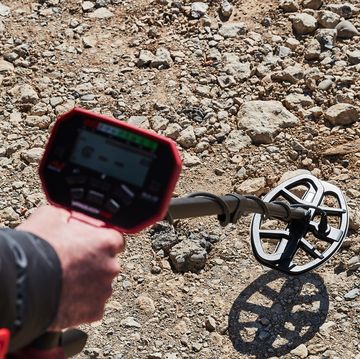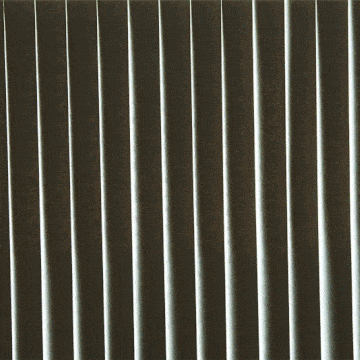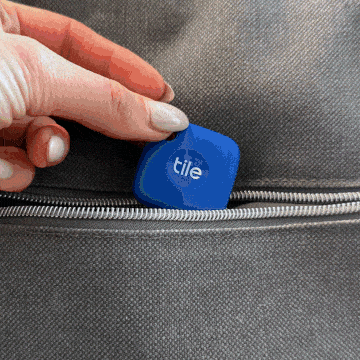1:35 A.M. A Tuesday
Ernie Booth, the operations manager of the main printing plant of The New York Times, is walking the floor. The plant is a 515,000-square-foot building in Queens, on the Van Wyck Expressway, half a mile from LaGuardia Airport. Booth is a big man with enthusiasm to match his heft, and tonight he's wearing a collared shirt, sweater, and chinos in various shades of beige. He glides through the place like a small-town mayor, jabbing the noisy air with quick chin nods, offering ritual greetings to some of the 350 employees who work here each night.
"What's happening, Tom?"
"Hey, Andy."
"All quiet, Dennis?"
Dennis Díaz, a coordinator in the control room, responds that one section of the plant's fourteen miles of conveyor belts is not working.
Booth draws a breath and scans the control room, a glass-walled office he compares to an indoor air traffic control tower, overlooking the floor. "You see all these flashing things?" he says, pointing to one of several screens displaying different parts of the plant. "Flashing things are bad. Flashing things mean we have a problem." He appears to have a lot of problems at the moment. But this night is not much different from most, and Booth's only real complaint as he circulates the floor is that he'd rather be on his wheels: The plant is so large that many employees travel from one area to another on adult-size tricycles. (Booth has a trike and a golf cart.) During daylight hours, when the plant isn't in use, the Times sometimes rents it out—in the most recent Jason Bourne movie, it stood in as a crowded factory in the Philippines.
Tonight, like every weeknight, the plant will print more than 300,000 copies—double that on the weekend—which by 3:25 a.m. have to be loaded onto dozens of trucks. The straight trucks, which are already at the loading docks, can fit eight pallets each, holding a total of 14,000 individual copies. The trailer trucks carry twenty-four pallets, a load of 50,000 copies. The trucks will make about eighty departures from the plant by tomorrow morning, fanning out to other distribution points, from which the copies will be delivered to grocery stores, bodegas, office buildings, and newsstands from New Haven to Albany to Trenton. Booth used to spend his nights waiting for the trucks to arrive—he had a Times paper route in the Riverdale section of the Bronx starting in 1986, when his daughter was born and he needed extra income.
Booth got here at 4 p.m. and will work until the last truck leaves. "Sometimes we'll get out at 3, sometimes we'll get out at 7," he says. "You're dealing with night people—we're vampires here." Tomorrow morning, most readers will think nothing of the fact that the paper was at their door at the same time yesterday and the day before that and the day before that. They may also think nothing of the fact that, at the moment they bend down to pick it up, some of the stories in the print version have already been updated on their phones and tablets, and new stories have been added, too: the score of a double-overtime game that ended too late, or news out of India that broke overnight. And all of these stories, the total daily and nightly output from all the desks at the Times—news from Washington and Ukraine and Sacramento and St. Louis and Staten Island and Mexico City, reviews of movies that open tomorrow and of TV shows that aired last night, opinion pieces, recipes, weekly sections on home design and science and real estate and style and books—feed a larger world of news that never stops consuming. The growing universe of digital news outlets includes a great many amalgamators, recyclers of other people's reporting. Some report their own stories, but it is the Times that provides by far the most coverage of the most subjects in the most reliable way. The Times is a monster, a sprawling organization, the most influential print newspaper and digital news site in the world.
But it still makes most of its money by selling paper, and the paper on which tonight's edition is being printed arrived, as it does each week, from four different paper mills—two in Quebec, one in Ontario, and one in Tennessee—where it was packaged into rolls large enough to serve as the business end of a steamroller: 2,200 pounds each and fifty inches in diameter. Eighteen-wheelers carried them to a Times storage facility in the Bronx, where more trucks took twenty rolls each from there to the plant in Queens, where manned forklifts deposited each one in a four-story warehouse that can hold 2,231 just like it. The rolls now sit stocked in eight rows on nine shelves, four deep, like soup cans in a grocery store for giants. Conveyor belts deliver them to the paper-handler area, where the rolls are flipped sideways and land with a deep boom, ready to be loaded into press reels that feed them through slits in the ceiling. The rolls of paper unspool on seven different presses that will each run for between six and eleven hours by the time Booth clocks out. A plant worker attaches the end of each roll to the start of the next using giant pieces of tape, so the press never has to stop.
In the plate room Sergei Primachenko waits for digital files of each page to arrive from the Times' midtown Manhattan headquarters, ten miles to the west. (Ask Booth how often the editors there meet their deadlines and he will push his glasses down his nose and raise an eyebrow.) Primachenko seems to view many steps in the printing process as "mission critical." ("Having the precise amount of ink is mission critical.") Upon a file's arrival, a laser etches an image of the page onto a piece of oxidized aluminum, which is then washed in a sugar-based chemical like a roll of film being developed. A different plate must be produced for each of the press's four colors—cyan, magenta, yellow, and black—and because a single page might be printed in a different form in various editions, the plant uses 3,000 plates to print some fifty pages each night.
From there the plates are locked onto the press, and ink is put to paper. The presses can print up to 80,000 papers per hour, and it's noisy as hell when Booth heads back out onto the floor—the decibel level can reach 87, loud enough to cause hearing loss over time. The paper zips up from the basement, zigzags through the press—which applies ink that sticks only to the areas marked by the laser—then jets back toward the middle of the room, where half a dozen pressmen in ink-stained jumpsuits grab pages off the press so that they can stare intently at a millimeter-wide box in the top-left corner of the page. If the box is black everything is in order, but if there's a hint of cyan off one edge, the plate is out of register, and the page must be readjusted. By the time a page is deemed ready for public consumption—called "first good copy"— the plant is likely to have printed several thousand copies that go straight to the recycling bin.
Each page is simultaneously folded in half by a machine and sliced apart, to be raced along the miles of conveyor belts, as if Rube Goldberg had designed a clothing rack for the world's busiest dry cleaner. The goal of the machine, one of only three in the world, is to get each paper out the door without being touched by a human hand. Along the way, various inserters open each copy, deposit ads from Macy's or Target, stack papers into bundles of fifty, strap them with plastic binding—snap! snap! snap!—with a speed that would make a dominatrix blush, and pile them on pallets to be rolled onto Times-branded trucks, which start pulling away in an order scheduled to the minute, bound for one of fifty depots, where paperboys and girls and men and women will pick up this morning's New York Times more or less the same way Ernie Booth did twenty-eight years ago.
6:20 A.M. A WEDNESDAY
Lydia Polgreen opens her eyes, rolls over in her bed, andgrabs her iPhone. Her mind is already several time zones ahead. Polgreen is the deputy editor of the Times' international desk, which used to be called the foreign desk until somebody pointed out that the Times has readers all over the world. (As Polgreen puts it, "Foreign to whom?") She scrolls Twitter to see what's trending. She scans the apps and websites of the Times' competitors. She reads the many stories that some of her seventy-five foreign correspondents filed while she slept. Then she gets out of bed and makes coffee. She needs to be at the Times' headquarters for a 9:40 conference call with the editors in Europe.
The Times is one of a dwindling number of media outlets willing to keep reporters in places where they aren't always wanted. Polgreen has worked as a correspondent in Senegal, South Africa, and India and knows the importance of being looked after. Reporters assigned to a country for the first time are occasionally taken totally offline for months or even a year—no stories to file, no office to report to—so that they can learn the language and culture, an expensive and extraordinary commitment by the Times. In addition to monitoring their stories, Polgreen also must monitor the whereabouts and well-being of the reporters themselves. "If they disappear for a really long time, we'll definitely be like, Hey, what's up?"
Sometimes the Times' commitment to covering the entire world has dire consequences. In early 2012 Anthony Shadid, a Times correspondent who had won two Pulitzer Prizes for his coverage of Iraq, was in Syria for the uprising against President Bashar al-Assad. Shadid and Times photographer Tyler Hicks were in the country without the knowledge of the Syrian government, having entered Syria at night across the mountainous border it shares with Turkey, which is strung with barbed wire for much of the 500 miles. They scrambled over a barbed-wire fence, and guides on horseback, arranged by Shadid through a network of smugglers, picked them up. On the way out a week later, Shadid suffered a severe asthma attack, leaned against a rock, and collapsed. Hicks administered CPR for thirty minutes, but Shadid never recovered. He was dead. When a local doctor was finally persuaded to arrive on the scene, Hicks picked up his friend's body, hoisted it into the doctor's truck, and took it back across the border into Turkey.
11:50 A.M. ELECTION DAY
Stacy Cowley's eyes move around her computer screen, bouncing between the Times home page and a half-dozen open chat windows. There is pizza coming later because it's Election Day, and on Election Day at the Times there is free pizza.
"Election Day is like the High Holidays around here," Cowley's colleague Michael Owen says.
Owen and Cowley are the morning producers of NYT Now, the Times' first mobile app that has a dedicated newsroom team around the clock. It launched last April. This job—running an app—is like a growing number of jobs at the Times in that it didn't exist six months ago. Owen, tall and reserved, and Cowley, with glasses and long dark hair and a well-caffeinated energy, sit near the paper's news editors—different creatures living in the same forest. While Owen perches at his standing desk scrolling the Web for what's making news, Cowley sits at her desktop using old-fashioned news judgment and modern technology—a program tells her in real time how many people are clicking on any given story—to help determine what's worthy of keeping on the app this very second and what to replace with something more view-worthy. Bursts of text stream into her chat windows as editors jockey for position on the app. Times journalists communicate largely through a customized version of Gmail and a labyrinth of private chat rooms like these. "Until, like, six months ago we were literally communicating all day with AIM chat rooms," Cowley says. "Anyone in the world could have joined that chat room if they happened to find it."
Just after noon Cowley is greeted by a young man in jeans and a blazer who works for the Times' Interactive News Team, a group formed seven years ago to train and develop a team of "developer journalists," programmers who code tools for the newsroom's use. He has built a bit of code that will deliver live updates to the NYT Now app as election results pour in tonight. Cowley plugs it in to the app's content management system, hits refresh, and watches as … nothing happens. The developer exhales, sits back in his chair, opens a laptop, and goes back to work.
"There's definitely a little MacGyvering happening here," Cowley says. "We're gluing the hamsters and the shoestrings together to make this all work."
No one at the Times is under the illusion that producing the world's most ambitious print newspaper alone will be enough to keep the company afloat. In the third quarter of 2014, print advertising decreased by 5 percent. But digital advertising was up more than 16 percent, and there is an increasing willingness in every section of the paper to try anything. On the twenty-eighth floor of the paper's Manhattan headquarters, around the corner from the company lactation room, is the Times' R&D Lab, a huge, open room with completely white walls and views that stretch deep into New Jersey and ceilings high enough to accommodate a small squadron of drones sitting momentarily idle on a shelf. "The drones are for droning," Matt Boggie, the lab's director, says. He's been working with the company's legal department to find out how to use the drones for news gathering in ways "that don't annoy anyone and don't get us sued."
Boggie is preparing the lab for a visit from advertisers—he gives tours of the lab regularly to business associates, school groups, and the like—and walks through the space messing around with various prototypes. On one computer an earthquake tracker can compose news-alert summaries of a story based on seismographic data. Next to it a computer tracks various cycles—the life span of a fad, the spread of a virus—based on how often certain keywords appear in Times articles. In the middle of the room, a PlayStation controller has been hooked up to a Mac to display all the traffic coursing through the Times' website, with flying hexagons representing published stories and blinking parabolas tracing visitors to the site. "I can't control it because I don't actually know how to use it," Boggie says. An assistant walks by and feeds a stack of papers into a shredder.
The R&D Lab opened nine years ago with the goal of looking three to five years into the future. (The Times declined to say how much it cost to build.) Marc Frons, the company's CIO says he has no idea how people will interact with theTimes in ten years, "whether it's on your wrist, or your forehead, or you take a pill, or it's a holographic contact lens, or a head-up display in your vehicle—or on your mirror in your bathroom." The lab explored E Ink before the Kindle even existed, was responsible for delivering the earliest versions of the paper's mobile news alerts, and helped the Times become the first publisher with an application on Google Glass. One of the lab's researchers recently designed a brooch programmed to light up whenever a topic is mentioned that matches something the wearer read about online that day. What good would that do, exactly? Boggie answers with enthusiasm, "We don't know yet!"
3:10 P.M. A MONDAY
Steve Duenes, the graphics editor, is reviewing a series of thirty maps that illuminate the ongoing crisis in Ukraine. The blinds in his office begin to lower automatically. ("There's a little chimp," he says.) Duenes is tall, with close-cropped hair to match the militaristic fervor with which he pushes his department, which has grown rapidly in recent years. The Times employs approximately 1,300 journalists, a classification that now includes much more than writers, editors, and photographers. There are videographers and developer–journalists and graphic designers, who insist that you not call them graphic designers. Every section of the paper has been affected by the Internet, but the graphics department is hardly recognizable from the days not long ago when, to accompany a story about Borneo, for example, it would simply produce a small black-and-white map of Borneo. Duenes's desk still produces traditional newspaper graphics, but it also now employs thirty-five people who have expertise in statistics, programming, cartography, 3D modeling, motion graphics, audio production, or video editing. At the department's two long desks, designer Haeyoun Park combs through data on the racial breakdown of police forces—a story the graphics team reported without any instigation from print reporters—while nearby Matt Bloch is updating the paper's digital hurricane tracker. " 'Tis the season," he says.
A breaking-news event might require eight members of Duenes's team, who are otherwise free to focus on the kind of in-depth reporting for which the Times' print reporters are generally known. Last August a graphics editor who had been tracking police data for four years discovered that the New York Police Department had more or less ended its controversial stop-and-frisk policy, which some critics had described as racial profiling. This was news to the reporters on the Metro desk, and the editor there assigned a story to go along with the graphics department's analysis.
The story, and the graphic, ran on the front page.
8:30 P.M. A WEDNESDAY
Tom Jolly is talking into a speakerphone. The page one meeting is about to begin.
"Washington, are you there?"
The page one meeting used to be at 10 a.m., but now the 10 a.m. meeting is simply called the news meeting because it covers so much more than what's going to be on page one the next morning. So now the page one meeting is at four o'clock, and it's four o'clock now.
Jolly, the paper's associate masthead editor—one of the most senior positions in the newsroom—is sitting at a large conference table surrounded by thirty editors in bright-green felt-covered chairs. For all the Times' investment in its digital momentum, page one of the daily print edition is still the most coveted space in The New York Times, and this conversation remains the paper's most sacred ritual.
Jolly worked at the Times for sixteen years before taking over the news desk, which means he's in charge of how the news is presented on every platform. He is dressed like a hip professor—blazer, cool glasses—as if attempting to bridge the gap between the paper's gray past and its digital future. To his left a screen is lowered to display both the Web and mobile front pages, which refresh constantly. Various smartphones rest on the table. One of Jolly's responsibilities is to decide when to send out a mobile alert to the 14 million people who have asked the Times to interrupt their lives when he thinks the news warrants it, one more way the sound of a newspaper landing on a driveway in the morning no longer heralds the arrival of the day's news. ("We've almost entirely gone away from paying attention to any print deadlines," says Jason Stallman, the sports editor.)
Still, reporters want their stories on A1. Jolly goes around the room asking representatives from each section to state their case. It is a mostly polite debate—when the obituaries editor offers a remembrance of a yoga pioneer, a gruff, male editor is ribbed for his surprising knowledge about the topic—but the editor from Washington isn't shy about butting in. Jolly turns over the floor to an editor from international, who has a piece about the ransom demanded by Islamic State militants for James Foley, the journalist who had recently been beheaded in Iraq. It's an obvious candidate for the paper's top story—front page, top-right corner—but some editors have concerns. "Are you talking about the other side of it?" says Ian Fisher, the paper's deputy executive editor and previously the paper's Rome bureau chief. "The Italians would always say, 'If you'd only stop paying, they'd stop taking Italians.' "
Dean Baquet, the paper's top editor, is worried that revealing too much about captives still under Islamic State control might put their lives in danger.
"We're not identifying their names and the amount of money—we can talk about the sourcing," the international editor says.
"Let's talk after the meeting," Baquet says.
The Times is occasionally mocked for its staid and deliberate pace, but it is in moments like these that the seriousness with which it approaches every aspect of its operation becomes clearest. There are few organizations with the resources to spend such time and consideration on stories that aren't primed to go viral—though search-engine optimization and other tricks of the digital age do receive plenty of consideration. When the conversation turns to a vivid story from Liberia, where Ebola has overtaken a particular neighborhood in Monrovia, one editor proudly reports that she believes the Times is the only outlet with a reporter on the ground, which makes everyone happy until another editor says, "I think BuzzFeed actually has somebody there." There is momentary silence.
The editors continue around the room. With Ebola and the Islamic State, plus the story pushed by the Washington editor and a national desk dispatch from protests in Ferguson, page one is running out of space. A metro editor advocates a story on jury selection because it has "a cool interactive element," while sports pitches a piece on conflicts of interest in the United States Tennis Association. Art is a consideration, so the lights are dimmed, and a photo editor cues up the day's best photographs on a projector: There are images of a bombing in Gaza, a portrait of Foley, and a series of pictures from a Times photographer embedded with a group of Kurdish soldiers in Iraq. Attorney General Eric Holder is in Ferguson, but the photo "is pretty boring." The most arresting image is a Liberian soldier enforcing an Ebola quarantine with a rifle around his shoulder and a baton he is swinging in the direction of a young girl. The next day it will run across two-thirds of the front page.
After a moment's deliberation, Baquet announces that the last slot will go to the jury story, "so we don't have the world's grimmest page." The room empties as editors depart to relay the news to their sections, while Baquet, Jolly, and a group of designers stay behind to sketch out what the page might look like on a piece of paper. It is one of the only times that day anyone in the office uses a pencil.
6:00 P.M. A WEDNESDAY
Andrew Keh is one of twenty reporters in a beige-walled room in the bowels of Madison Square Garden two hours before the New York Knicks tip off against the Dallas Mavericks, listening to Knicks coach Derek Fisher try to explain why his team has gotten off to such a rotten start. Reporters shout questions about injuries and lineups while Keh stands to the side in an untucked plaid shirt under a sweater, camouflage Nike sneakers, and black jeans with a reporter's notebook sticking out of the back pocket. Because tonight's game is starting late, Keh's editors have asked him to file a story before the first jump shot, so he's in the locker room hoping to talk to Tyson Chandler, the former Knick returning to face his old team. But when the locker room closes forty-five minutes before game time, Chandler still hasn't shown up. "We just wasted half an hour," Keh says.
Keh got his start covering high school hockey games for The Scarsdale Inquirer, a weekly newspaper in a suburb of New York, and joined the Times as a news clerk, making copies and answering phone calls. After Keh helped a sports reporter with legwork on a series of stories about steroids, the paper hired him as a beat reporter covering the New York Mets, and then the Brooklyn Nets. Now his home is the Garden. Keh has to be at the press conference and in the locker room "in case a fight breaks out," but theTimes wants even its daily beat reporters to pursue ambitious stories. "We're trying to separate ourselves from every beat reporter who covers every groin strain," he says.
Even with a regular schedule of games, Keh's job is not regular at all. He missed a game a few weeks ago when he landed a strange scoop. With an assist from the Times' research department, he had gotten in touch with a woman in Santa Fe who owned the domain name Nets.com and had been demanding that the Brooklyn basketball team pay her a seven-figure fee for the URL. Keh's editor told him to get on the next flight to New Mexico, where he landed less than twenty-four hours later. The woman agreed to the interview on the condition that Keh complete the Times crossword puzzle with her, which he did.
At the Garden, Keh returns to the media room to write an early game story and finds Scott Cacciola, another Times reporter, at the next desk. Cacciola is on an assignment from Baquet, who had just watched a miserable Knicks game and wondered what the heck Phil Jackson, their legendary and newly hired president, was doing with the team. (The Knicks were, at the time, 5-21.) "I'm supposed to stalk Phil," Cacciola says.
The game is a blowout—the Knicks lose by twenty—so Keh has plenty of time to file a second version of his story from his seat in the press box just after the buzzer before hustling downstairs for post-game interviews. After Fisher's press conference, Keh walks to the Knicks locker room, tweeting quotes from Fisher along the way. (The Times doesn't require reporters to tweet, but encourages it and offers classes.) In the locker room, Cacciola trawls for lesser Knicks players who might comment on Jackson while Keh waits for Carmelo Anthony, the team's star, who took forty-five minutes to shower and dress before showing up to talk.
Deadline looms, so Cacciola offers to record Anthony while Keh returns to his laptop. At 11:07 Keh's editor emails to say he needs the story in thirty-three minutes. The article Keh filed when the buzzer sounded was already posted on the paper's website twelve minutes ago after a quick edit by only one other set of eyeballs—there was a typo in the first sentence—and he plugs in his earphones to pull quotes from the interviews. Cacciola returns with the Anthony interview. At 11:42, two minutes past deadline, Keh files his story, calls the copy editors to make sure it arrived, closes his laptop, turns to Cacciola, and says, "Let's get a beer."
8:30 P.M. A WEDNESDAY
Bill Dicke taps his desk anxiously, leans toward his computer monitor, and stares at the word "quarantine." He's trying to write a headline for a story on the arrival of Ebola in the United States, slated for tomorrow's front page. As assistant editor on the news desk, Dicke is among the last pair of eyes on the paper's front page and writes a lot of headlines. "Quarantine" is the best word, but at ten letters it has too many characters for a single column above the fold. The paper's first deadline of the night is in a half-hour. Dicke frowns. "There are seven pages for foreign, eight for national, and we're supposed to close them in some kind of order before nine o'clock," Dicke, who wears glasses and has a white beard, mutters. "None of the pages are even set." He rolls up the sleeves of his blue oxford shirt.
Facing Dicke in another cubicle, Lillie Dremeaux, a young woman with dark, curly hair, is considering what to do about a casualty. An activist in Israel was injured in an assassination attempt, and Dremeaux, the deputy editor on the news desk, is trying to sort out where that story should fit among the 300 articles, videos, blog posts, op-eds, and interactive features the Times will publish today. The Times website is the most coveted digital news space in the world, visited by 28 million unique users each month, nearly twice as many as The Washington Post's. On this day Isabel Kershner, a reporter in Jerusalem—seven hours ahead—has just filed a brief account of the shooting, and the home page producer placed the story prominently. Dremeaux asks the photo editor if they have a picture of the victim—they don't—and, after considering it for less than ten seconds, tells the producer to bump the story down. "It certainly could explode into a war or something," Dremeaux says. "But he's not even dead yet."
The news desk is the center and the highest expression of the Times' transformation from once-a-day newspaper to twenty-four-hour news outlet. It's both the slowest and the fastest part of the Times operation—a place where Dicke can spend a substantial portion of the evening considering a single word while Dremeaux makes decisions in seconds. Most of the Times' editorial staff is spread throughout three floors of the paper's headquarters, and news is on the third floor. (The headquarters is at 620 Eighth Avenue, just off Times Square, which was named after the newspaper opened there in 1904. In 2007 the paper moved into a glass-and-steel structure down the street, an audacious addition to the Manhattan skyline. The new building is sleek and efficient—the window blinds rise and fall automatically based on the temperature inside.) Some desks are covered in old newspapers, others are clean and empty, a reminder that the Times operates in a post-recession, Internet-saturated media landscape where it still employs more reporters than any other major newspaper but fewer than it once did. (In December the Times offered buyouts to one hundred newsroom staffers. Dicke took the offer.) A studio in which a video crew films short clips for the website and mobile editions looms over the middle of the newsroom.
As it turns out, Dicke doesn't need to fit "quarantine" on a single line after all. That night, the San Francisco Giants win the World Series, thanks to a performance by pitcher Madison Bumgarner so dominant that Tom Jolly decides to swap in that story and moves Ebola to an inside page with a wider berth for a headline. But Dicke has other problems and stares at his plus-size computer monitor, which is flipped 90 degrees so that he can see the digital page as if it were a newspaper in his hands. Every article on every page appears highlighted in blocks of green, yellow, and red, signifying varying stages of completion and, thus, increasing levels of threat to Dicke's deadline. Elsewhere on the front page he changes the lead of one story because it's too long, then moves to another about how politics in Louisiana is becoming less eccentric. The starter headline reads, "Draining Color From Politics in Louisiana," which Dicke doesn't care for. "It's not a very exciting headline, but it is sort of the point of the story," he says, copying and pasting the text into a blank document. "I'm gonna see if I can do any better." Five minutes later, out comes "Colorful Rogues Make Way for National Issues."
Dicke meets his first deadline—barely—but 9 p.m. is only the beginning. Deadline for the first local edition is 10:45, followed by another at midnight, and a final call half an hour later. When Dicke finally packs up to leave just after 12:30 a.m., Lillie Dremeaux is still plotting out the next morning's home page and preparing to hand overnight duties to an editor in Hong Kong. In a previous era, after the last page was sent to the printer, an editor would ring a bell, walk toward the door, and holler "Good night!" to mostly no one, because there was no one left to yell at. Dicke looks around at colleagues midshift, their eyes pinned to computer screens.
"We no longer do that," he says.
2:55 A.M. A SATURDAY
Natasha Smith and Michael Gordon park on a cobblestone street on the Brooklyn waterfront as they do every morning. Theirs is one of dozens of cars lining both sides of the street. They stand with a group of thirty or forty other deliverymen and women inside a loading dock waiting for one of Ernie Booth's eighty trucks to arrive. The Sunset Park Depot, as this cement room the size of a high school gym is known, is one of forty Times delivery centers throughout the New York area, and on this night it is responsible for the safe deposit of 12,559 copies across 215 different paper routes around the borough. Two hundred and thirty-three of those papers are the responsibility of Smith and Gordon, a husband-and-wife team that has driven a pair of routes together for the past three years. When the truck arrives at 3 a.m., the couple load five bundles of fifty papers each into a shopping cart and dump them onto one of the many wooden tables in the room, where they combine the front and inside sections. Smith tosses one copy aside after spotting a rip, and watches out for missing sections—"I can tell just from the weight"—which could result in a complaint on the report card every carrier receives each morning. (They get paid 50 cents per paper.) Smith and Gordon shove each completed paper into a blue plastic bag and toss it into a pair of shopping carts. Deliverers are allowed to show up anytime—Smith and Gordon arrive early, because late arrivals often get stuck with damaged copies—so long as they deliver their papers by 6:30 on weekdays and 8:30 on weekends. (In the suburbs, where commuters leave earlier, the weekday goal is 5:30.) The busiest hour in the depot is around 4 a.m., and by 5:30 all the papers have been removed and the door is shut, leaving a lone worker to fill a shopping cart with the damaged and discarded copies left behind.
Smith and Gordon load their minivan and deliver all 233 papers in about ninety minutes. "Nothing like the cold to make you do it faster," says Smith, who's wearing a leopard-skin sweater and navy-blue beanie. On some blocks she and Gordon walk opposite sides of a street, tossing papers onto stoops, while on others they split up—Gordon carries an Ikea bag stuffed with papers as he walks down blocks with a high density of subscribers, while Smith drives sparser streets nearby. The longest stop is the five minutes it takes Smith to deliver six papers to individual apartments in a nursing home. One customer has asked her to hit his door with the paper so he knows it has arrived. Another customer's dog waits on the step and barks when the paper lands. At this moment, hundreds of thousands of copies of The New York Times are flying out of people's hands, a little action that starts a simultaneous morning ritual: A newspaper lands with a soft thud, and eventually someone opens the door and picks it up, reads it, and knows what is happening in the world.














